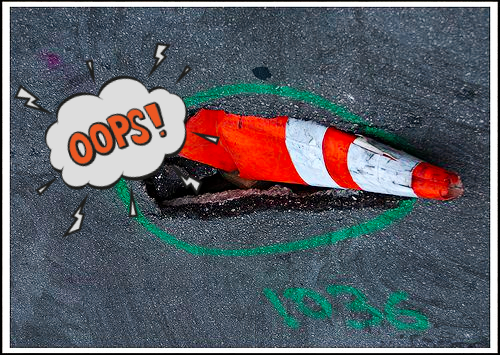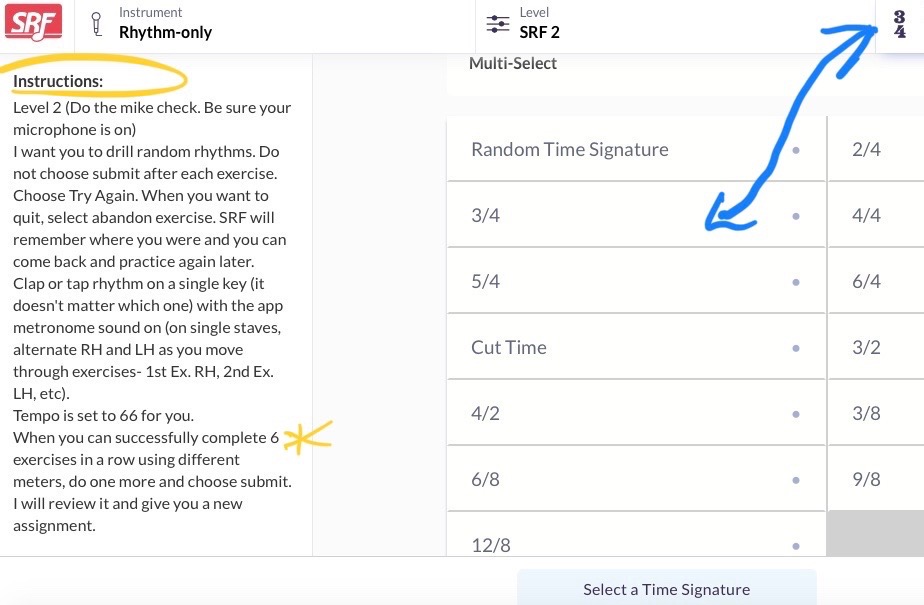Key Signature and Accidental Potholes: 5 Ways to Fix Them

My Dad taught me to drive. He spent many hours on the road for work and was a demanding teacher. One day we were practicing on a back road that was full of potholes. I swear there were potholes on top of potholes and, hard as I tried to miss them, I hit every single one. Dad was uncharacteristically silent until finally he said, “Go back. You missed one.”
Do you ever feel like saying that about sharps and flats- except in reverse? “Go back. You played one.” Key signatures and accidentals leave quite the field of potholes in the world of piano playing and learning.
Let’s face it, there are some people who get key signatures and accidentals and there are some people who struggle. Some people have great short term memories and some not so great. Some people have better senses of keyboard geography and spatial relationships than others. Some people just naturally have great ears. Playing scales, progressions, and arpeggios doesn’t always translate to score reading success with key signatures and accidentals either.
Here are 5 strategies to help fix both confidence and accuracy with key signature and accidental potholes; Just Do It. Lots Of It., Wait, What? F vs. F#, Isolate And Strengthen, Ear Power, and Take It To The Real World. As always on PA, you can use these ideas whether you use technology or not. But, using both traditional methods and technology together has given me positive, reliable results.
Sight Reading Factory is my very favorite tech tool to help my students become better sight readers. It is widely used in school programs but not as well known in the studio piano community—and it absolutely should be. If you are working on your own, SRF is affordable enough to use just for yourself. As a teacher, I have had great success with SRF in my personal studio and with college class and private students. Best of all, there is much less convenient ignoring of sight reading assignments because I can see how much they have been doing between lessons.
Just Do It. Lots Of It.
Observing sharps, flats, and naturals is largely a function of experience. Many who play and learn only 4 pieces a year, who play only in ‘easy’ keys, or who are self-taught are going to struggle. Playing lots and lots of short sight reading pieces weekly can go a long way toward correcting the problem. The more you do, the better you get.
You don’t have to have a special book for this although there are some good ones out there. Any collection of interesting pieces in varied keys and at an appropriate level will do. Choose a small section at a time- 4-16 measures depending on frustration tolerance. Work on 1 or 2 sections each day. Vary the pieces- don’t get stuck going through one 3 page piece 8 measures at a time for days on end.
To supplement these excerpts from actual pieces, Sight Reading Factory allows you to customize their exercises by level, key combinations, meter, tempo and more. You can create a class for multiple students or just one. Here’s a video of showing how a student gets started with an assignment.
Wait, What? F vs. F Sharp
When you are working out the notes, if you are going to name them then do so correctly. If the key signature is one sharp then say F# rather than F. If there is one flat in the key signature then say Bb not just plain B. You would think that this would be obvious, but it is not. Even adults and college students need an occasional reminder. I actually came across an online video, on a site devoted to sight reading, in which the teacher made this mistake while pointing to the pitches. My hubby had to listen me me rant for a while about that one.
Isolate And Strengthen
Learn to look before you leap and look ahead while you play. The best pianists study the score before they begin. They also always look one or two measures ahead of what they are actually playing, depending on the density of the music.
To learn to do this, try looking a beat ahead, then 2, then 3, until you can look at least a measure ahead at all times. Of course, this means that you have to have at least the first measure in mind when you begin to play! In SRF, you can choose a moving cursor and position and/or have measures disappear to encourage forward thinking and discourage giving up mid exercise.
Sometimes rhythmic complexities can use up so much brain power that accidentals and key signatures get completely ignored. If you have trouble doing musical math, work to strengthen your rhythmic skills by writing in counting in short passages away from the keyboard. When you go to the piano, resist the urge to start playing and practice rhythms only at first. Instead, tap them using Rh for its’ part, Lh for its’ part, and both together when hands play at the same time. In Sight Reading Factory, you can set an assignment to Rhythm only. You can set the metronome to include subdivisions that help with the musical math part too.
Here’s a level 2 ‘Rhythm only’ assignment I created in SRF along with a sample exercise.


Ear Power
The pianists who are most successful at key signatures and accidentals also possess good ears and a good sense of keyboard geography. They can use their senses of hearing, touch, and sight together with the map of the keyboard they carry around in their heads. Strengthening the ear by learning intervals, sight singing, and singing along while you play can help improve key signature and accidentals accuracy. Strengthening your sense of touch and spatial relationships through learning scales, arpeggios, chords/cadences, broken octaves, and the like can also improve these disorders.
Play air piano. Practicing and visualizing a piece away from the keyboard is a great way to strengthen your sense of touch and spatial relationships. You can also divide a passage into short (2-4 measure) sections and then alternate how you play each sections; section 1 in the air, section 2 on the keyboard, section 3 in the air, and so forth. Don’t forget to reverse the process. When playing air piano, be sure that you are actually lining your fingers up over the correct imaginary white and black keys. In SRF, I encourage my students to use air piano during the study countdown I set in the assignment.
Listen to the kind of music you want to play. Listening improves your ability to anticipate what will happen next when you play. I am not talking about listening to the piece you are learning but rather listening to a lot of pieces that are like that piece. Then, when you are practicing and learning, your ear will kick in and free up some brain power so you can attend to those pesky sharps, flats, and naturals.
Take It To The Real World
When you begin learning a new piece of repertoire, teach your brain all the trees first, then give it the forest. Divide it into manageable sections (2-4-6-8 measures) and then break it down into its component parts. One of my mentors used to tell me to look for the place with the most accidentals and practice that first.
Break down a section and practice the rhythm, sing it away from the piano, play a little air piano saying the pitches aloud, decide which fingers to use, play a little more air piano saying finger numbers, count aloud and play hands apart, play and sing along, etc. Be creative and make a game of it rather than a chore.
Transpose and improvise on passages- even if it is like pulling toenails! You don’t have to do either in front of others but they will improve both key signature and accidentals confidence. The happy result of complicating a section with improvisation and transposition is that when you go back to the way it was intended things are much easier.
If it’s overwhelming to transpose or improvise on a passage at your level, start by transposing easy pieces in 5 finger patterns with no more than 2 sharps or flats and no accidentals. Then, move gradually to more complicated pieces and key signatures.
You can use any piece or passage you like for improvisation. It can be as simple as changing one or two notes in a passage or changing just one harmony. The best thing about improvisation is that if you don’t like it, you don’t have to do it that way again.
SRF can help you prepare students for real world transposition and improvisation. When you create assignments, set random keys or allow students to choose from a list of keys in successive attempts. You can also have students play rhythm only examples on the keys of their choice.
Parts of this article were included in a 2011 PA post.


